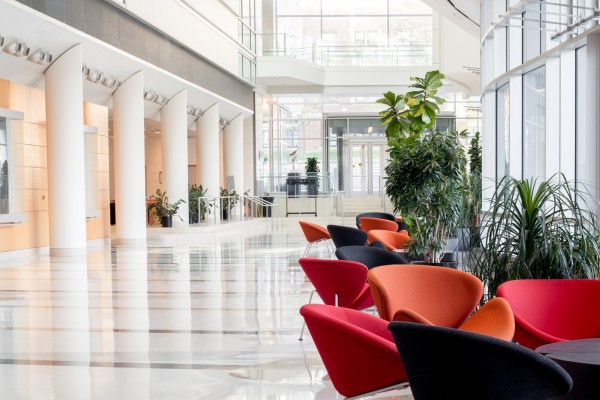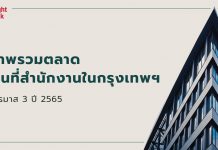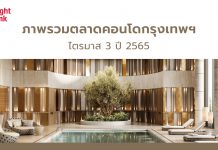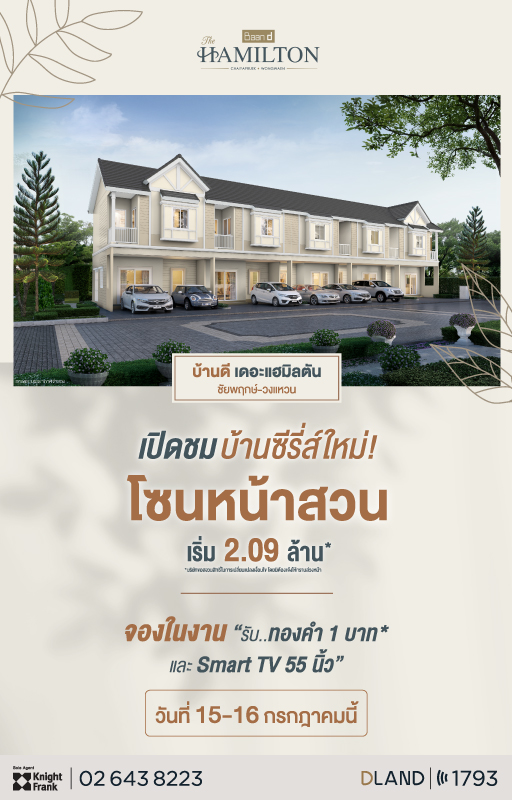Highlights
- Business sentiment in Thai economy soars 1.5 points after the government announced the next election would be held in late 2018.
- From Q1 to Q3, three new office buildings entered into the market, bringing the total cumulative supply to 4.95 million square metres.
- This quarter, the market experienced positive net absorption. Meanwhile, the amount of new office space leased was extremely high at 143,014 square metres due to the relocation of tenants, especially in Grade B office.
- The overall occupancy rate was 91.77%.
- The quarterly average rents significantly increased by 2.85% to 722 baht per square metre per month.
- The trend for a small office is now moving into co-working spaces.
Market Overview
Figure 1
Thailand Business Confidence Index

Source: Bank of Thailand (BOT)
Remarks:
1/ Business Sentiment Index is compiled from BOT survey data of 1,500 businesses.
2/ Below is the interpretation of the index:
Index = 50 indicates that business sentiment remains stable.
Index > 50 indicates that business sentiment has improved.
Index < 50 indicates that business sentiment has worsened.
After the government announced that the next election will be held in late 2018, the Business Sentiment Index (BSI) expanded to its highest point in six months because many investors believe the smooth running of the elections is a significant factor that will drive Thai economic growth in the coming years.
Supply
From Q1 to Q3 2017, the total Bangkok office supply increased to 4,951,672 square metres when three new office buildings entered the market. In the future, we still expect that the trend of the new office development projects will be in locations outside of the areas traditionally viewed as the CBD but are rapidly emerging to become new commercial districts.
Note: These figures exclude multi-owner occupied premises and office buildings smaller than 5,000 square metres.
FIGURE 2
Bangkok Office Supply and New Supply from 2012-Q3 2017

Source: Knight Frank Thailand Research
Future Supply
Approximately 165,710 square metres of new supply will be completed next year. In addition to projects under construction, the total amount of new supply of 214,609 square metres or more would be added to the market in 2019-2023. With this estimated increase, the total office supply will be around 5.4-5.6 million square metres in 2023.
TABLE 1
Future Supply of Bangkok Office Space

Source: Knight Frank Thailand Research
TABLE 2
Total Future Supply

Source: Knight Frank Thailand Research
Demand
In Q3 the net occupied space stood at 4,544,012 square metres, representing an overall occupancy rate of 91.77%. The occupancy rates in the office market continually rebounded in every segment from Q4 last year. The highest occupancy rate was shown in the Grade B category, at approximately 94.1 per cent, followed by Grade A and Grade C segments at 93.5 per cent and 89.8 per cent, respectively.
This quarter, the amount of new office space leased in Bangkok this quarter or the net take-up was extremely high at 143,014 square metres, an increase by 293% from Q2. Meanwhile, the net absorption was at 82,865 square metres, which means that 60,149 square metres of space were surrendered over the same period. This indicates that office tenants have been expanding; those relocating during this quarter expanded into larger blocks of space at their new premises. This was especially evident in the Grade B office sector.
So, from figure 5, if we compare the net take-up space with the new supply on an annual basis, we forecast that, going forth, the future supply in the next three years will be lower while the net take-up continues to grow, thereby implying that there will be an office supply shortage in the future.
Note: These figures exclude multi-owner occupied premises and office buildings smaller than 5,000 square metres.
FIGURE 3
Office Supply, Demand and Occupancy Rate, 2012-Q3 2017

Source: Knight Frank Thailand Research
FIGURE 4
Quarterly Net Take-Up, Net Absorption and Net Surrender from Q1 2014 to Q3 2017

Source: Knight Frank Thailand Research
TABLE 3
Occupancy Rate by Grade from Q1 2015 to Q3 2017

Source: Knight Frank Thailand Research
FIGURE 5
Bangkok Office Demand and Supply Analysis, Q1 2014 to Q3 2017

Source: Knight Frank Thailand Research
Rental Rates
The overall average rental rate was 722 baht per square metre per month, representing an increase of 2.85% quarter-on-quarter, from just 702 baht per square metre per month in Q2. The average monthly rental rate of Grade A office was 993.6 baht per square metre, while Grade B was 720 baht per square metre and Grade C was 454 baht per square metre.
FIGURE 6
Asking Rent of Bangkok Office by Grade, Q1 2015 to Q3 2017

Source: Knight Frank Thailand Research
TABLE 4
Office Asking Rent by Grade and Percentage Increase

Source: Knight Frank Thailand Research
FIGURE 7
Asking Rent of Bangkok Office by Major Roads, Q2 – Q3 2017

Source: Knight Frank Thailand Research
Outlook
Nowadays, many tenants prefer plug and play offices, and developers are getting more and more flexible in providing fully furnished offices. A standard or traditional office is not the only single choice for tenants anymore. Co-working spaces and serviced offices are one of the fastest growing workplace movements of the last decade. The number of co-working spaces around the world has increased by 1,121 per cent since 2011.
FIGURE 8
Number of Co-working Spaces Worldwide, 2011 – 2017

Source: Knight Frank Thailand Research and Statista.com
In Thailand, The total number of co-working space has grown from fewer than 20 locations to over 100 locations over the past five years. We forecast that the total amount of new supply of co-working space will increase to 30,000 square metres within the next year. This is a small number when you compare with the overall market, but we believe that co-working and serviced offices will become an even more significant part of the office-leasing segment in the future.
TABLE 5
Differentiators of Office Type

Glossary
- Central Business District (CBD) – Central business district, or CBD, is the centre of economic and financial activity of a city, and we define this as the area with the greatest concentration of prime office buildings, 5-star hotels and luxury retail.
- Grade A, Grade B and Grade C:
- Grade A – By virtue of their desirability, these prime properties command the highest rents in their market. You will find them located in the Central Business District near a mass transit station, and have a floor plate of at least 1,000 square metres.
- Grade B – The largest sector of the office market, these are the buildings that are traditionally in the greatest demand; they might not be the most expensive properties in the market but represent good value for money.
- Grade C – Typically older properties, these buildings provide office space for rent at the most competitive rents in the market.
- Take up – the amount of new office space leased during a certain period of time.
- Net absorption – the net change in occupied space over a specified period of time.
- Co-Working Space – communities of freelancers and startups that involve different businesses collaborating for a greater end result.














